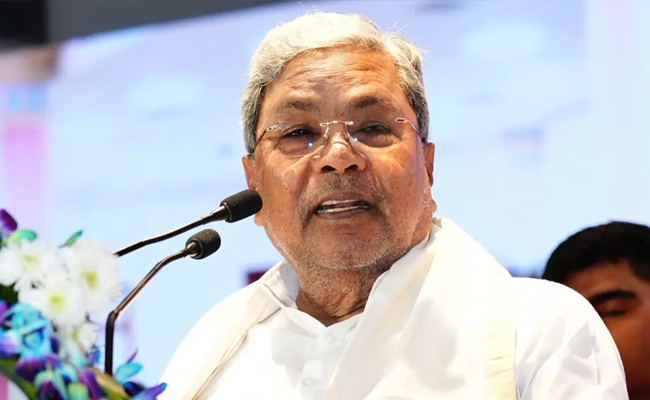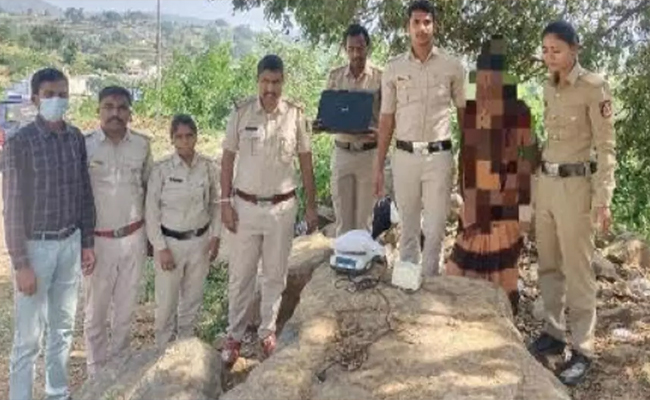Bengaluru, Apr 22: Karnataka Revenue Minister R Ashoka on Thursday said a total of Rs 571 crore is being released by the state government to various district administrations, including Bruhat Bengaluru Mahanagara Palike for COVID-19 management, amid a spike in cases.
"Aimed at controlling the COVID-19 pandemic Rs 305 crore is being released to Bengaluru Mahanagara Palike (BBMP), they can use the amount for medicines and medical care, to make payment for labours hired on contract basis, for leasing marriage halls and others as facilities for quarantine and RT-PCR tests," Ashoka said.
Speaking to reporters here, he said the money is immediately being released under the Revenue Department's Disaster Response Fund.
"Using this funds complaints regarding pending bills, delay in payment for contract workers among others can be resolved, and BBMP Commissioner has been given instructions to take immediate steps in this regard," he added.
Noting that a total of Rs 266 crore is being released to other district for COVID management, the minister said Kalaburagi is being alloted Rs 50 crore, Rs 15 crore for Bengaluru Rural and Bengaluru urban districts and Rs 10 crore each to Chamarajanagara, Davangere, Shivamogga, and Tumakuru among others.
Taking note of long queues at crematoriums in the city, Ashoka said that a 4-acre land in Tavarekere in Bengaluru will be opened for cremations of Covid-19 dead bodies.
"The land is ready... the land already has a cemetery...
it will be open from Friday and will function for two months... It can be used for cremation of 50-60 bodies daily as per traditions using fire wood, he said.
He also said the government has identified another 100- acre space, about three km from Tavarekere, where 50 bodies can be cremated daily.
"This will be ready in about two days.. so, in a day or two, everything will be fine," he added.
Aimed at relieving the pressure on crematoriums and burial grounds, Karnataka government on Wednesday had permitted cremation or burial of bodies of COVID-19 victims at the land or farm house owned by the family members or relatives of the deceased, by strictly adhering to the guidelines.
The Minister said the rush at crematoria and burial grounds in Bengaluru was due to people from nearby villages and towns.
"For the only reason of burning bodies, people are getting bodies to Bengaluru from hospitals located in a 15-20 km radius.
Thats why there is a burden. Rural Covid-19 patients from Magadi, Ramanagara, Channapatna and Devanahalli are coming to the city for hospitalisation," he added.
Let the Truth be known. If you read VB and like VB, please be a VB Supporter and Help us deliver the Truth to one and all.
New Delhi: Chief Minister Siddaramaiah on Sunday asserted that fascism would not be allowed to enter India “through the back door of vote rigging” and called upon citizens to collectively defend the country’s democratic foundations.
Speaking after participating in an anti–vote rigging protest organised in New Delhi, Siddaramaiah said the gathering was not merely a political demonstration but a stand to protect Indian democracy. “We have come to the heart of our republic not as Congress workers or voters, but as protectors of Indian democracy,” he said.
Emphasising the importance of the right to vote, Siddaramaiah said it was the most sacred right guaranteed by the Constitution and the very foundation of democracy.
“Through voting, a farmer shapes the future of his children, a worker safeguards his dignity, a youth realises dreams, and a nation expresses its collective will,” he said.
He accused the BJP-led Union government of attempting to undermine this right through what he termed systematic vote rigging, including the alleged misuse of the special revision of electoral rolls. “This power is being stolen repeatedly,” he alleged.
ALSO READ: Bantwal police arrest two men for illegal sale of narcotics, seize two vehicles, 810 gm ganja
Warning against authoritarian tendencies, Siddaramaiah said history had shown that dictatorship does not begin with violence but with the misuse of institutions and manipulation of democratic systems.
“Across the world, authoritarian regimes pretend to protect democracy while quietly subverting it. This is what the BJP is doing today,” he charged.
He alleged that the ruling party was controlling institutions, intimidating electoral machinery, distorting voter lists, suppressing voter turnout in opposition strongholds, and misusing money and power. “This is not mere maladministration. Vote rigging is an attack on the very idea of India,” he said.
Siddaramaiah further claimed that governments formed through “stolen votes” could not be considered democratic.
“Such regimes survive through fear, fraud and distortion of the people’s mandate,” he said, adding that vote rigging posed the biggest threat to the republic since Independence.
Praising Leader of the Opposition in the Lok Sabha Rahul Gandhi, Siddaramaiah said he had shown exceptional courage in exposing alleged irregularities in voter lists, booth-level manipulation and “systematic, organised vote rigging” across several states, including Karnataka, Haryana and Bihar.
Referring to Karnataka, Siddaramaiah cited Mahadevpura and Aland constituencies as examples highlighted by Gandhi. In Mahadevpura, he said, thousands of allegedly fake and fraudulent voter entries and discrepancies in electoral rolls pointed to a narrow BJP victory. In Aland, he said, attempts were made to remove the names of legitimate voters ahead of the 2023 Assembly elections.
ALSO READ: Chamrajnagar: Woman arrested for selling ganja atop Male Mahadeshwara Hills
He noted that a Special Investigation Team (SIT) had recently filed a chargesheet accusing seven persons, including a former BJP MLA and his son, of attempting to delete the names of around 6,000 voters in Aland.
“This is a significant legal step in the fight against vote rigging,” he said.
Siddaramaiah concluded by stating that the fight against vote rigging was rooted in constitutional morality, Ambedkarite thought and the core principle of democracy. “Sovereignty belongs to the people, not to any party, regime or those who seek to steal elections,” he said.





